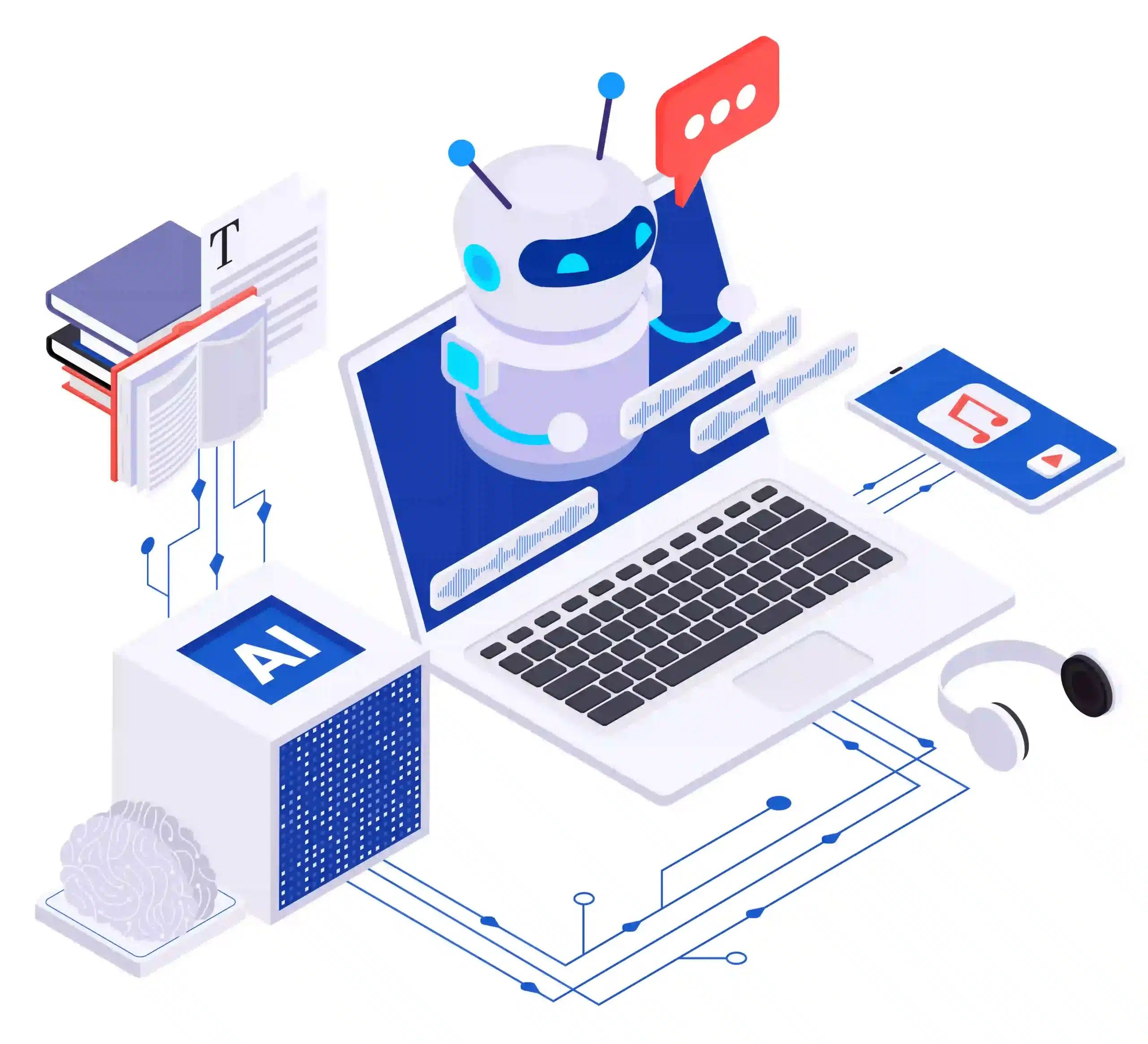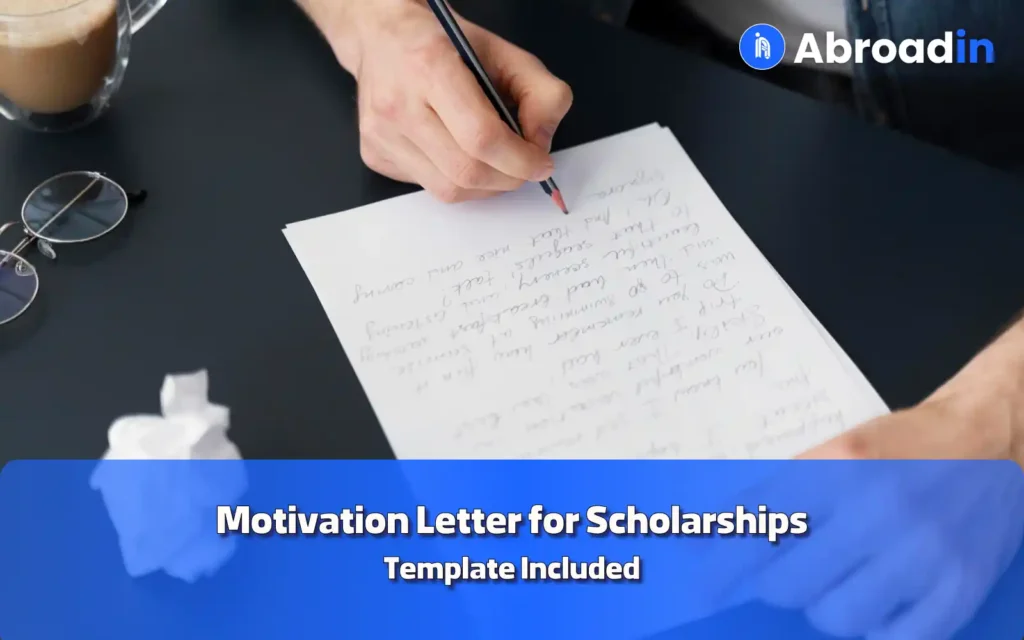

What are Benefits of Using ChatGPT for College Admissions?
The process of college admission can be super stressful. You’ve got essays to write, forms to fill out, and deadlines coming at you fast. That is where ChatGPT comes in handy.
ChatGPT is an AI that can understand and create text in natural human language. It’s trained with a transformer algorithm and tons of text data, allowing it to respond to prompts or questions based on what it has learned.
Here are some ways this AI tool can make things easier for students:
- Quick Idea Generation: Sometimes, starting an essay is the hardest part. ChatGPT can help students brainstorm and come up with some topics.
- Grammar Checks: Let’s say you’ve already written a draft. ChatGPT can help you catch structure, grammar, and punctuation mistakes as well as give suggestions to improve sentences.
- Outlining Your Essay: This AI tool can also help you structure the text so that it makes sense and flows better.
ChatGPT for college admissions can save you time and help with some of the technical stuff. However, here’s the thing—it’s not perfect.
While ChatGPT can help with brainstorming or proofreading, nothing beats getting feedback from a real person.
A teacher, counselor, or friend can give you advice that AI can’t. They can help you find your voice and make your essay genuinely personal.
In addition, when you write your own essay, it feels more rewarding. It’s your story; you want colleges to see the real you—not some AI-generated version.
Review an Example of Chatgpt for University Applications
Let’s review an example of a ChatGPT-written essay to understand the process better. We provided this prompt for an essay:
Write me a 600-word admission essay that is good enough to get accepted to a respected college abroad under the following instructions:
– Use American English.
– Include all parts of a professional essay for application.
– Write about me spending time with deprived children and teaching them math.
– Write some of my experiences that have influenced the admission office.
Of course, you can provide more information and prompts to receive better and more natural writing. This is just an example of the everyday use of AI tools.
Here’s what the premium version of ChatGPT (the GPT-4 model) wrote for us in return:
Admission Essay
From a young age, I was fascinated by the power of numbers. Math was not just a subject for me—it was a language that made sense of the world. I remember spending afternoons solving puzzles and equations, finding joy in the way everything fit together perfectly. Yet, over time, I realized that this passion was not just about mastering equations for myself. It was about using this knowledge to make a difference in the lives of others, particularly those who lacked the resources and opportunities to explore their potential.
I grew up in a modest neighborhood where access to quality education was limited, especially for children from underprivileged families. As I advanced in my studies, I couldn’t ignore the gap between my classmates and those children who struggled to grasp basic concepts simply because they lacked support. The realization that math could be a barrier to their success—and that I had the skills to help—sparked a desire within me to take action.
It all began one summer when I decided to spend my vacation volunteering at a local community center. I proposed a math tutoring program for children from underprivileged backgrounds. I knew it would be a challenge—many of these children had developed a fear of math due to years of frustration and failure. My goal was not just to teach them formulas but to change their mindset and help them realize that math could be enjoyable.
On my first day, I met Ali, a ten-year-old boy who struggled with basic multiplication. He would often become frustrated and lose confidence whenever he couldn’t solve a problem. I knew I had to approach this differently. Instead of focusing on the textbook, I decided to use everyday scenarios that he could relate to, like counting change or dividing fruits among friends. Slowly, I saw a change in him. Ali began to engage with the problems enthusiastically, and within weeks, he was solving equations that he once found impossible. Witnessing his transformation was one of the most rewarding experiences of my life.
One moment that had a significant impact on me was when I was working with a group of children who came from families that could barely afford basic necessities. As the session ended one day, a little girl named Sara approached me with a hand-drawn thank-you card. She told me that because of my classes, she no longer felt ashamed in her school’s math class. That card is something I still cherish, as it reminds me that small efforts can make a big difference in someone’s life.
Through these experiences, I realized that teaching is not just about transferring knowledge; it’s about building confidence and inspiring a love for learning. It also taught me patience, resilience, and the importance of empathy. I learned how to adapt my teaching style to fit each child’s needs, understanding that no two students learn in the same way. More importantly, I saw how education could be a powerful tool to break the cycle of poverty and open doors to a brighter future.
This realization is what drives me to pursue higher education abroad. I believe that studying in an environment that values diversity, innovation, and hands-on learning will help me refine my skills and expand my horizons. I am eager to immerse myself in a college community that challenges me both academically and personally. By pursuing a degree in mathematics education, I hope to not only deepen my understanding of the subject but also to explore new teaching methodologies that can make math more accessible to all students, regardless of their backgrounds.
My experiences with these children have shown me that true fulfillment comes from using my skills to uplift others. I am determined to create programs that bring quality education to communities that need it most, particularly in underserved areas. My goal is to return to my home country and establish educational initiatives that will provide children with the tools they need to succeed in life, starting with a solid foundation in math.
I believe that being part of a respected college abroad will equip me with the knowledge, experiences, and network necessary to make this dream a reality. I am confident that my background in community service, combined with my passion for mathematics, will allow me to make meaningful contributions to the college community while preparing me for a future dedicated to education reform.
Thank you for considering my application.
Essay Review, ChatGPT for College Admissions
When you first look over the AI-written essay, it seems pretty good. The text flow and language are easy to follow. There are no obvious grammar or structural mistakes, and it appears polished.
However, upon closer inspection, the essay fails. The content could be better, but it lacks depth and authenticity in several key areas.
One of the most glaring issues is the need for a personal voice. While the essay is grammatically correct and structured well, it feels mechanical and impersonal.
The writing’s generic tone makes it clear that it was crafted by a program rather than a real person.
Admissions officers are looking for essays that reveal something unique about the applicant, not just a string of well-written sentences.
The AI-generated essay might meet all the formal writing requirements, but it lacks the nuance, passion, and personality that can only come from genuine human experience.
Another problem is that the essay relies heavily on clichés and surface-level descriptions. While it describes volunteering experiences and helping underprivileged children, these experiences are conveyed in a generic way that feels formulaic.
The essay uses the right buzzwords—like “making a difference” and “breaking the cycle of poverty”—but it doesn’t go beyond those phrases to offer real insight into what these experiences meant to the writer.
It lacks specific anecdotes that reveal the depth of the challenges or personal growth that resulted. In an honest, thoughtfully written essay, you’d expect to see concrete examples, genuine emotions, and personal reflections that show how these experiences shaped the applicant.
Furthermore, AI-generated essays often fall into the trap of being overly safe and sanitized. The essay presented above, for instance, avoids taking any real risks or expressing bold opinions.
Admissions officers seek students who are willing to share their authentic selves, even if that means revealing vulnerabilities or demonstrating a more complex personality.
But here, the content reads like it was designed to please everyone rather than telling an honest story that might resonate deeply with a few people.
Finally, while the essay covers the basics of a good narrative structure, it could be more cohesive. The ideas are strung together neatly but don’t flow from one genuine thought to the next.
Instead, it reads like a series of pre-packaged paragraphs stitched together to fit the prompt. This results in a lack of continuity that’s hard to pinpoint but easy to feel.
It’s clear that while AI can generate well-written text, it struggles to capture the natural progression of thoughts and emotions from a person genuinely reflecting on their experiences.
In the end, while AI tools can help generate ideas or polish grammar, they need to improve when it comes to creating a compelling narrative that genuinely captures the essence of an individual.
Writing an admission essay is about more than just getting the words right—conveying who you are, what you care about, and how your experiences have shaped you. That’s something no algorithm can replicate.
📚 If you want to know about How to Write an Impressive SOP or Statement of Purpose read this article:

Be Careful Using Chatgpt for College Admissions
We live in an AI-assisting era when there is an intelligent tool for each task. It’s tempting to let ChatGPT write your entire essay while you sit back and sip your coffee, yet this is where things can go south.
Of course, using some tools, like Grammarly or even GPTs (custom versions of ChatGPT that combine instructions, extra knowledge, and any combination of skills), for reviewing and polishing texts is no problem, but admission committees want to hear your story in your own words.
This is why many universities use tools and software to detect if AI tools write an essay. If they find out, you used AI to write your essay, which could seriously hurt your chances of getting in.
Here is what you need to know about AI-written university essays and applications:
- AI tools lack a personal touch. AI doesn’t know you, understand your personal experiences, or how you feel about things. Admissions officers want to see the real you in your essays.
- There is the risk of plagiarism: If you copy-paste what ChatGPT writes, you could get caught for plagiarism, which is a massive no in college applications.
- Don’t miss the point: Colleges aren’t just looking for perfect grammar. They want to see how you think and what you care about. AI can’t show that.
In most cases, it is suggested that you write the admission letters and essays yourself. Let the possible mistakes tell you you’re a real human and ready to take on challenges and solve problems during your studies.
How to Use ChatGPT Responsibly for College Applications?
Is it okay to use ChatGPT for college admissions? Yes, but only if you’re using it THE RIGHT WAY. Here are some tips on how you can use AI tools, specifically ChatGPT responsibly:
- Clarify Requirements and Research: Use ChatGPT to get a quick overview of the application process and essay prompts or to research the values and programs of the colleges you’re applying to.
- Use It for Brainstorming: If you’re stuck and don’t know what to write about, ChatGPT can help you generate ideas. But make sure the final essay is all you.
- Getting Unstuck: If you’ve written a few paragraphs but don’t know where to go next, it can help you outline your thoughts.
- Fixing Grammar: After you have written your essay, you can use ChatGPT to proofread. Finally, read it yourself to make sure it sounds like you.
- Ask for Feedback, Not Full Edits: Use ChatGPT to review sections of your essay or get feedback on specific parts, like whether your introduction is engaging or your conclusion is firm.
- Practice Interview Questions: If you’re preparing for college interviews, you can use ChatGPT to simulate mock interviews. It can help you practice answering common questions so you feel more confident.
Just remember, ChatGPT should be like a friend who gives you professional advice, not someone who does all your homework.
AI tools, when used correctly, can make your tasks as a student much more efficient and manageable.
They can help brainstorm ideas, organize notes, check for grammar errors, or even provide initial drafts to get you started.
However, relying too heavily on AI for tasks that require personal insight—like essays, reflections, or projects where your unique perspective is essential—can undermine the authenticity of your work.
What are Other AI Tools for Writing Essays Besides ChatGPT?
There are many other AI tools for writing essays that can help with brainstorming, drafting, editing, and improving your content.
Here are some of the best alternatives to ChatGPT:
Jasper AI
Initially focused on content marketing, Jasper AI (formerly Jarvis) is now widely used for generating essays, articles, and creative writing.
This tool offers templates for different writing tasks, including essays, blogs, and academic content.
Jasper AI has features like “Boss Mode”, which allow you to generate long-form content with more control over the output.
Grammarly
While primarily an editing tool, Grammarly‘s AI-powered suggestions can help with rewriting sentences, improving grammar, and enhancing the clarity of your essays.
It has “Tone Detector” and advanced checks for conciseness and readability, which can be great for polishing essays.
Writesonic
It’s a versatile AI tool that can assist with various forms of writing, including essays, reports, and creative content.
Writesonic provides prompts and outlines to help structure your essay, making it an excellent tool for brainstorming ideas.
It also includes features like “Article Writer” and “AI Article Summarizer” for efficiently drafting essays.
Copy.ai
Known for its content generation capabilities, Copy.ai can also help with writing essays significantly if you need to help generate ideas or expand paragraphs.
It includes templates for creating essays, reports, and academic papers. So it gives you a head start!
Notion AI
This is an AI-powered assistant integrated into the popular productivity app Notion, useful for generating content, expanding ideas, and organizing essay drafts within your Notion workspace.
Sudowrite
Best for creative and narrative essays, Sudowrite uses AI to expand on your ideas, help overcome writer’s block, and provide innovative suggestions.
This tool focuses on enhancing storytelling and literary writing, making it ideal for essays that require a creative touch.
Wordtune
Wordtune is a writing assistant that helps rewrite, rephrase, and improve the style of your essays.
It offers suggestions for sentence restructuring and enhancing tone, making your writing more apparent and more engaging.
HyperWrite
It’s a versatile AI writing assistant which can help draft essays, brainstorm topics, and enhance text structure. HyperWrite provides suggestions for improving the flow of your essay.
Writespace AI
This one is considered an emerging AI tool designed for academic and research writing, which focuses on helping students generate essays, research papers, and reports with accurate citations and structured outlines.
QuillBot
QuillBot is a powerful AI tool specializing in paraphrasing, summarizing, and expanding content, making it ideal for essay writing.
It features a “Co-Writer” tool to help draft essays from scratch, along with grammar and plagiarism checks.
This AI tool is useful for restructuring sentences, improving readability, and generating content that maintains the original meaning in a polished way.
📚 If you want to know about Top Online Courses to Kickstart Your International Education Journey read this article:
Conclusion
Using ChatGPT for college admissions can be helpful, but only if you’re smart. Let it help you start, catch grammar mistakes, or organize your thoughts.
However, the essay needs to come from you at the end of the day. Be honest, be accurate, and show colleges why you deserve that spot.
If you find this article about using Chatgpt for university applications helpful and want more guides, please add your email address below. Just hit the Subscribe button to receive the latest news and the best guides in your mailbox.
FAQ
Here are the most frequently asked questions about the top study abroad consultants for Indian students:
Yes, you can use ChatGPT for university applications, but it’s essential to use it wisely. It can help you brainstorm ideas, check grammar, or outline essays, but you should rely on something other than it to write your entire personal statement.
You can use ChatGPT to help with college essays, but only to support your writing process. For example, you can use it to generate topic ideas or proofread your drafts.
Many universities use software to detect AI-written content and plagiarism in personal statements. It could harm your application if they suspect that you’ve used AI like ChatGPT to write your essay.
ChatGPT for academic use refers to using the AI tool to assist with tasks like researching topics, brainstorming ideas, organizing outlines, or fixing grammar in essays.
For downloading PDF of the article fill the form


How useful was this post?
Click on a star to rate it!
Average rating 5 / 5. Vote count: 1
No votes so far! Be the first to rate this post.








No comment yet, add your voice below!